On July 5th, Gahab revealed the mass-produced version of its HiPhi Z model through an online launch event. At the same time, the founder and chairman of Gahab, Ding Lei, announced that the price range of the company’s second model, HiPhi Z, would be between 600,000 and 800,000 yuan.
Gahab’s exterior design has always been at the forefront of automotive design. In a world where homogeneous electric cars are becoming increasingly prevalent, HiPhi Z once again brings us a sense of freshness after HiPhi X. So, how was such an eye-catching exterior design created, and what kind of thinking was behind it? Let’s explore.
Gahab’s design dream team, led by former BMW designer
Many people may not know that Gahab’s design team is extremely impressive.
Nicolas Huet, the vice president of Gahab’s design, is a former chief senior designer for BMW. He graduated from the top Swiss design school, Art Center College of Design, and has over 25 years of experience in automobile design.
During his stint at the BMW Munich Design Center, Huet led and participated in the design of various electric car models such as BMW 1 Series, 4 Series, 6 Series, ZAGATO Coupe \& Roadster, conceptual car Z18, and Vision i Next, which represents the future development trend of BMW. He also designed the third-generation Buick GL8. Huet is a well-known design master in the industry, who can handle both luxury coupes and MPVs.
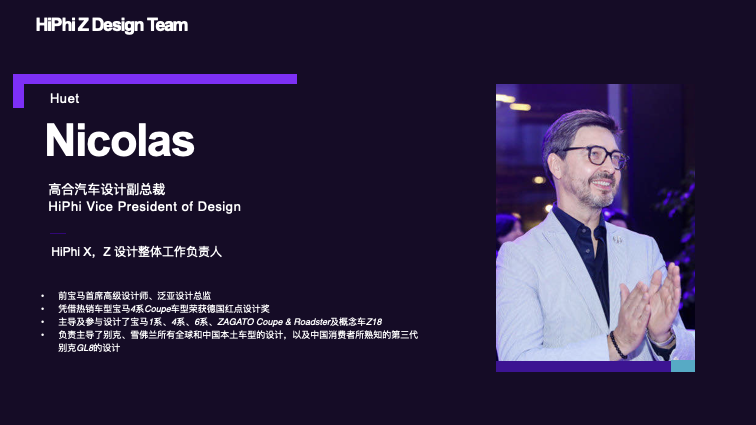
On the other hand, Mr. Martin He, the design director of Gahab’s multidimensional sensory design center, is a former chief exterior designer for the General Motors Pan Asia Technical Automotive Center. He has nearly 17 years of experience in automobile design and graduated from the industrial design program at Northeastern University. After joining the General Motors Pan Asia Technical Automotive Center, he won the championship in the Chinese Automobile Modeling Design Competition. Later, he was sent to study abroad at Art Center College of Design (ACCD) in California, USA, where he served as a guest artist for Honda’s California model release event and a pioneer designer for Toyota Deep Orange school-enterprise cooperation.
During his studies in the United States, Mr. He was deeply involved in the exterior design of Cadillac XTS, and he led and managed the design of multiple models on the General Motors Global Emerging Markets (GEM) platform. The 2014 Buick LaCrosse, which he led the design for, won the China National Patent Design Award.
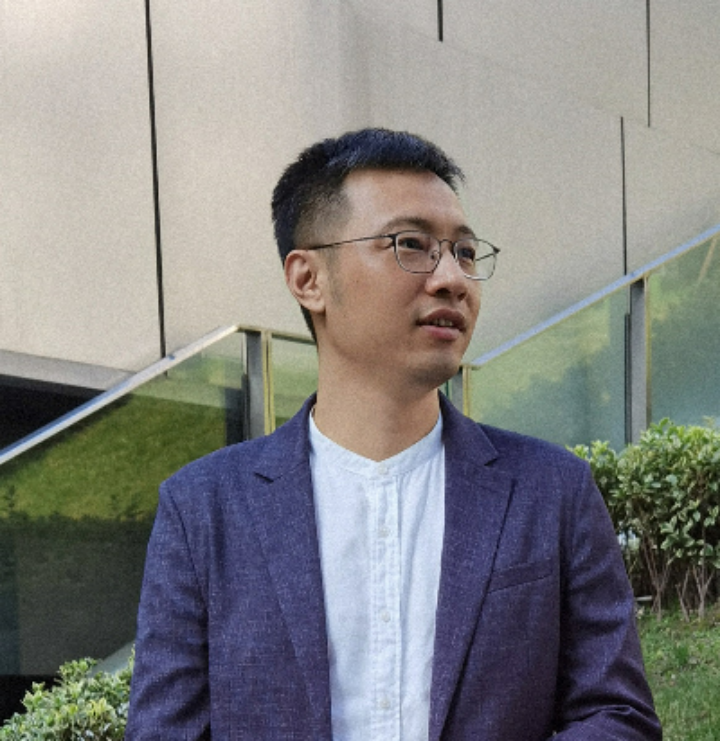 “Chefs” are all good chefs and the dishes they make will naturally not be bad. For ordinary people, appreciation of appearance may only focus on the overall impression left, while the various mysteries and unique designs in the design are equally important-they are all the “soul” of this car. Let us take a look at the mysteries in the design of this car from the perspective of HiPhi Z’s design.
“Chefs” are all good chefs and the dishes they make will naturally not be bad. For ordinary people, appreciation of appearance may only focus on the overall impression left, while the various mysteries and unique designs in the design are equally important-they are all the “soul” of this car. Let us take a look at the mysteries in the design of this car from the perspective of HiPhi Z’s design.
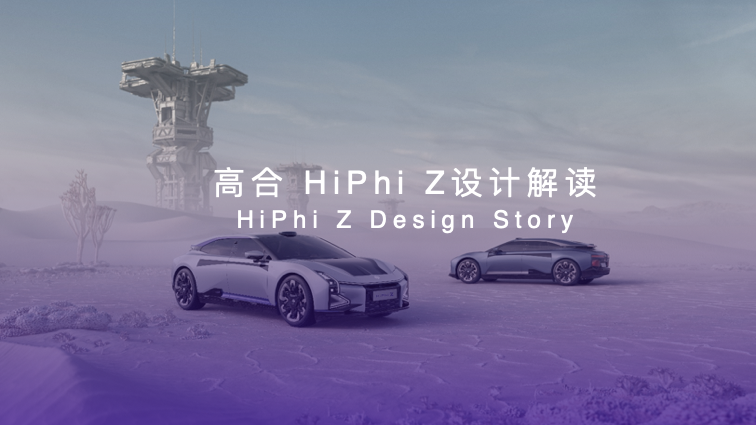
Bringing the future to the present
Think from concept to completion
Mr. He Ying introduced that since the release of the production version of the HiPhi Z by ELITE in the previous year, the design team of ELITE has been considering how to provide users with a sense of futuristic design. ELITE hopes to explore a brand-new, futuristic experience.
The designers of ELITE drew inspiration from sci-fi works. They believe that the urban structure and transportation in the future world are three-dimensional, and there are many imaginative ways of using transportation. Anything can interact, and even people’s clothes can express emotions.
Therefore, in the future world, digital, mechanical, and interactive technologies will be mainstream, and ELITE hopes that users of ELITE’s cars can become the natives of the future world. What the designers hope to do is to develop the HiPhi Z into a digital life form of the future.
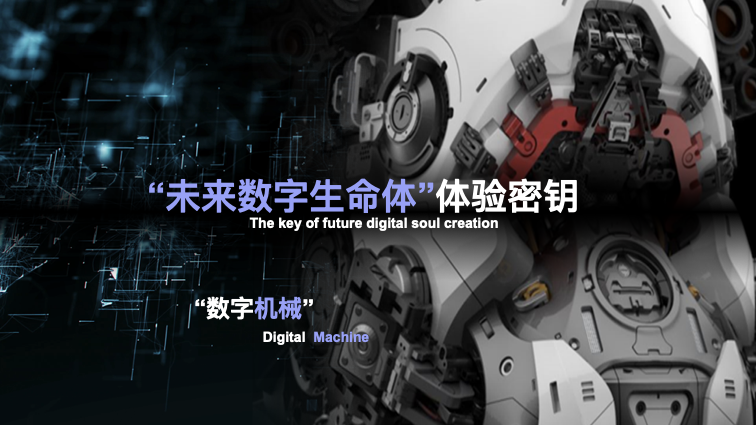
Therefore, the HiPhi Z is the carrier for this idea. From the early design drawings of HiPhi Z shown below, it can be seen that the proportions of the side of the body are extremely slender and exaggerated. The large wheel hub, the flying-back shape, and the large number of horizontal and vertical designs on the body all make this car have a strong sense of the future.
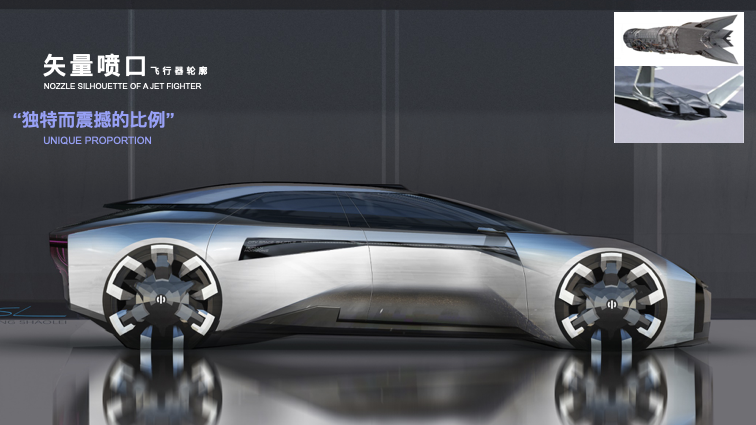
At the same time, the designers also hoped that HiPhi Z would have a strong mechanical style. Overall, the body of HiPhi Z adopts a silver and black color scheme, with armor-like shells on both sides. A three-piece flow splitter can be seen from the top, which has a strong sense of interlacing layers, making the overall shape of the car like a spacecraft.

In terms of design philosophy, the designers at ELITE proposed the term “orderly beauty”. Mr. He Ying explained that you can see the design of a tourbillon on many luxury watches. This design has a very precise and intricate structure, and the orderly beauty that these intricate structures possess is very special, and is almost non-existent in transportation.”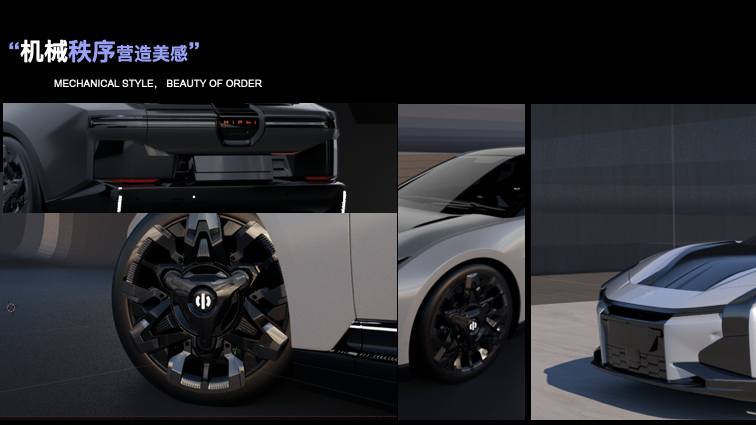
And the designer has placed this luxury and precise mechanistic sense of order onto HiPhi Z, creating a sci-fi feel without any sense of disharmony.
No double standard, equally stunning in mass production
In the mass-produced HiPhi Z, a digital matrix light effect has been introduced. The front and back of HiPhi Z have a very large area of ISD design, as well as a side door ISD intelligent interaction light. We can see similar light designs on many concept cars, but this is the first time they have appeared on a mass-produced car.

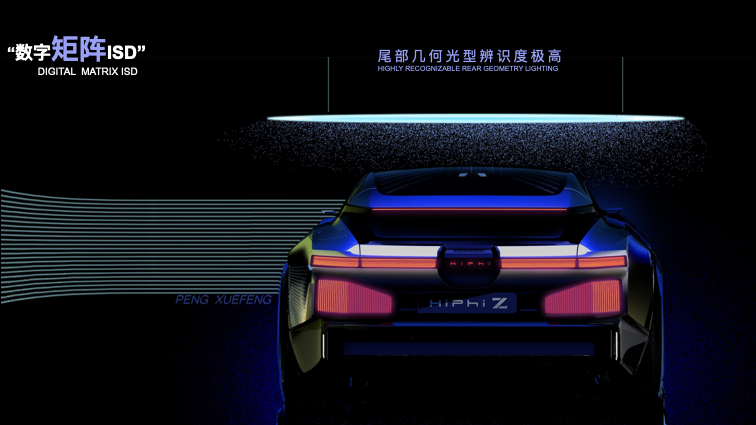
The designers at Gaohe have given HiPhi Z the ability to interact, and during the process of the driver or passenger getting on or approaching the vehicle, the ISD will show corresponding anthropomorphic animations, such as big eyes, cute sales, and tears. The designers believe that this design gives the vehicle its own soul.
The mass-produced version of HiPhi Z retains almost all of the elements of the concept car. Its distinctive appearance sets it apart from traditional coupe and GT models, with the extensive use of horizontal and vertical lines and avant-garde spoilers, wind deflectors, and rear diffusers making HiPhi Z look like a vehicle from Cyberpunk 2077.
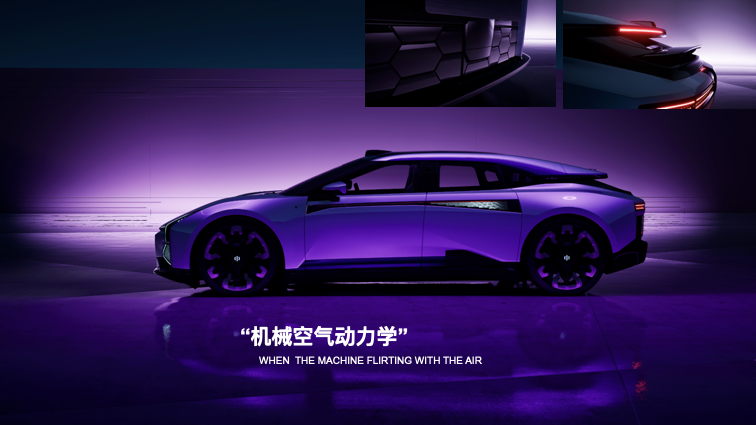
And these components also hide mysteries: the integration of the front grille and AGS active intake system gives the vehicle the feeling of breathing like armor; the active spoiler at the rear adjusts the vehicle’s aerodynamic performance based on changes in speed and airflow.
I believe you haven’t forgotten the cool door design on HiPhi X. Similarly, HiPhi Z also retains the cool design of the double-opening carriage door: the double-opening carriage doors have an opening angle of nearly 90 degrees, and the 3,150mm wheelbase makes it reminiscent of a Rolls-Royce.
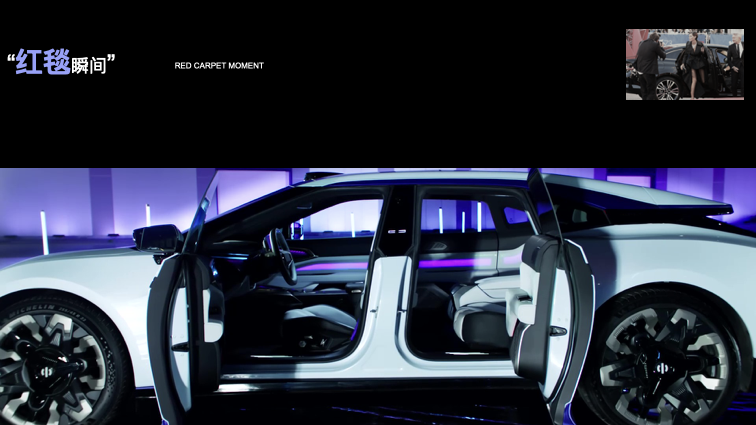 ### Driving? It’s like piloting a spacecraft!
### Driving? It’s like piloting a spacecraft!
Thanks to the efforts of designers, the interior of HiPhi Z is clearly more refined than that of HiPhi X, with higher finish and design sense.
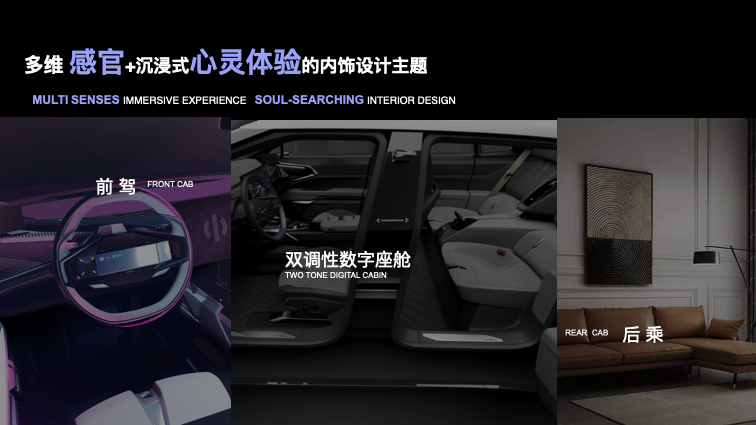
On HiPhi X, the eye-catching vertical screen and the attached “big color TV” make the design look a bit perfunctory. But HiPhi Z completely removes this impression: the lines inside the car are complex and sharp, and the screen on the steering wheel and the HiPhi Bot with a horizontal arm give a sense of a spacecraft or an aircraft. The convergence of lines from both sides to the center of the car makes the interior more inclined towards driving, taking another step towards reaching the effect of a through-car from front to back.
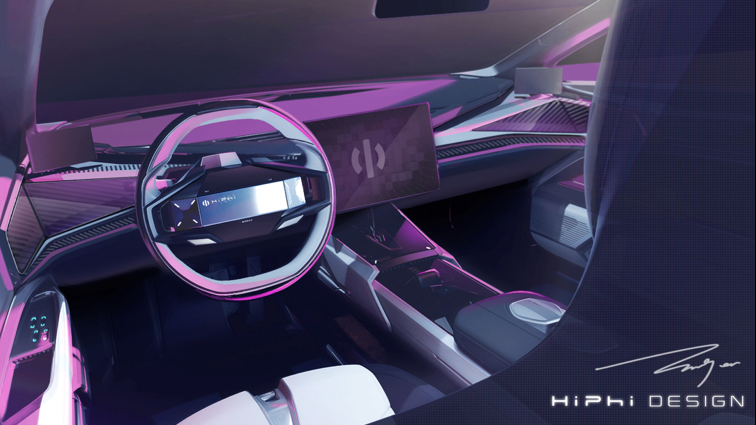
Speaking of HiPhi Bot, the designers said that its inspiration comes from many sci-fi movies. When aliens and humans interact, they often do so through touch and audio-visual signals. This gave the design team of LeSEE an inspiration: can they go one step further in UI/UX interactions?
So they combined audio-visual signals and body language to create HiPhi Z, and hope to bring everyone a very intelligent experience through HiPhi Bot, making people feel that HiPhi Z has a soul.
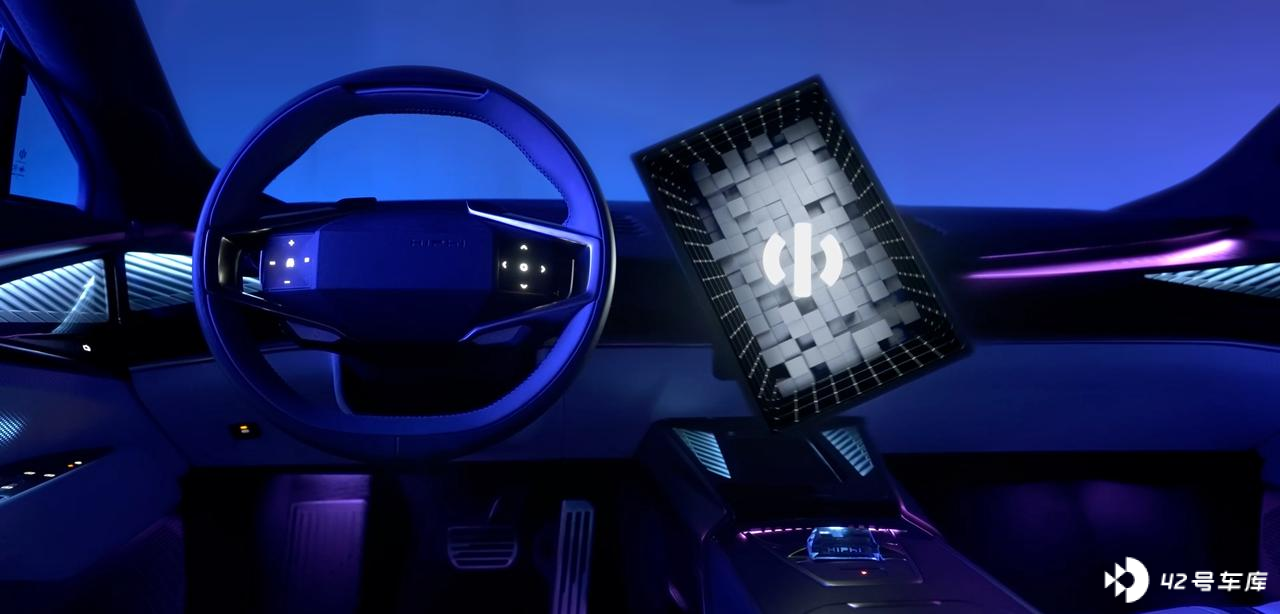
In the back seat, HiPhi Z creates a wrap-around design for the back seat. The design team of LeSEE believes that the car interior space should be respectful to all passengers, so the back seat has a transparent glass roof and an adjustable backrest angle, allowing passengers to constantly adjust their sitting posture and find the best comfort.
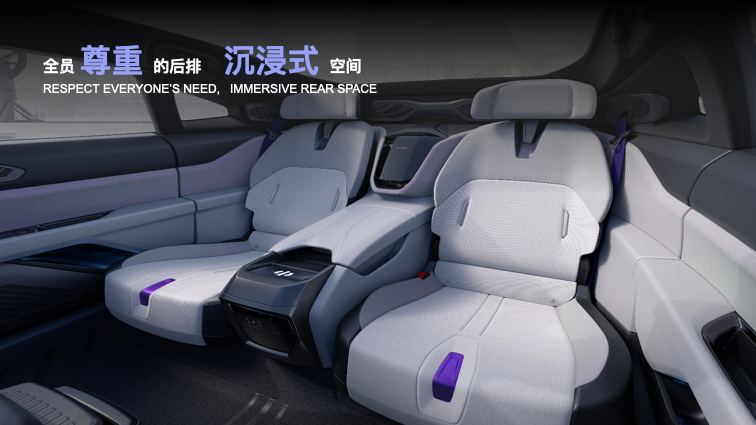
At the same time, because the back seat of HiPhi Z is close to a reclining position, the designer said that when accelerating, the back seat passengers will feel a sensation similar to that of a rocket taking off. At the same time, the designer said that the armrest on the back seat of HiPhi Z is very wide and, together with the door panel, forms a cocoon-like wrapping feeling.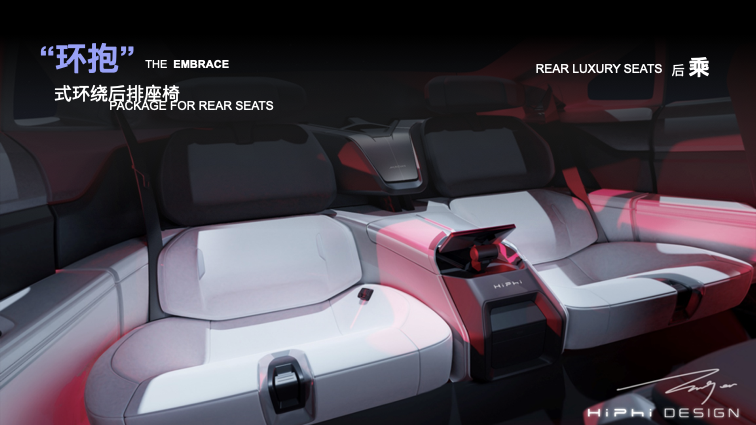
Inside the cabin, HiPhi Z uses a large number of LED light sources to create an interactive light immersion experience, which is highlighted by “smart surface” as described by the high co-designers. The designer hopes to create a “five senses completeness” experience within the car through fabric, visual, sound, and fragrance.
Designer Q & A
Q1: How does HiPhi Z maintain design continuity with HiPhi X?
Nicolas HUET:
As a new force in the automotive industry, we do not inherit any traditions but seize opportunities. In the context of the transformation of the automotive industry, we focus on redefining the DNA of the brand, and we are most concerned about the user experience. The high co-design team has been constantly exploring modern technology and seeking innovation to meet customer needs.
Of course, design style determines a customer’s purchasing decision, but we believe that design language is a kind of attribute, which can present different styles according to different scenarios, needs, and personalities. Therefore, design should not be constrained by so-called continuity. Design is used to support the overall image of the car and provide customers with a unique aesthetic experience according to different scenarios.
Therefore, high co-design team created the concept of “TECHLUXE technology luxury”. Technology luxury is a new concept that regards design as part of a broader brand DNA, rather than just a continuation of aesthetics. Both HiPhi X and HiPhi Z reflect this technology luxury.
Q2: HiPhi X has large screens on the center console and the passenger side, but this design has been removed on HiPhi Z. How should this design change be interpreted? Does this mean that high co-design team are more restrained in the application of screens in the interior, or does it meet the unique needs of some users?
Martin:
We hope to create a completely different flagship product with HiPhi Z, which has a very different tonality from HiPhi X. X is a product with diversified scene capabilities. But we hope that Z is a product that focuses more on driving.
So, we can see that compared with X, the body of HiPhi Z is lower and the interior space is more inclined to driving experience. In terms of design, the visual is guided to the only screen in the center by the design from both sides to the center, while the driving information is focused on the HUD and this screen.
In addition, the addition of HiPhi Bot’s multi-joint robotic arm brings a different interactive experience. All of these make X and Z significantly different and become flagship products in their respective fields.## Q3: What are the benefits or effects of the ISD intelligent interaction light design on HiPhi Z’s positioning or car-making concept, given that it is not available on HiPhi X? Could this design affect the rigidity and safety of the car door and body?
Martin:
Firstly, HiPhi Z is more driver-oriented compared to X. The design of the ISD body interaction light can provide enough “personal heroism” sentiment to the driver. Additionally, the abundant vertical and stereoscopic design and sufficient body size of HiPhi Z provide enough space for ISD lighting.
In terms of safety, HiPhi Z’s car doors have undergone corresponding strengthening treatment, and the application of carbon fiber and steel-aluminum mixed materials also ensures that the body structure strength meets safety standards, without affecting the rigidity of the car body.
Q4: During the use of electric vehicles, we find that some cool configurations may look good on PPT, but they quickly lose their novelty after use, and the stability of these functions may also affect the user’s experience. I think this is a kind of technological surplus that will not increase people’s comfort more. How do designers from HiPhi avoid this problem?
Martin:
Although we have been meticulously designed in appearance, we only kept a large central screen in the cockpit. We also used a HUD to replace the instrument panel. In terms of creating an atmosphere for the front driver, I think that HiPhi Z has become more focused and simplified. While we see various complex operations on traditional supercars, HiPhi Z achieved a balance between rich functionality and convenient operation, making it very easy to use.
In addition, we also provide a comfortable experience for passengers in the rear seats. Traditional supercars cannot achieve a balance between coolness, driving, and practicality for the rear seats.
Conclusion
From the 570,000-800,000 HiPhi X to the 600,000-800,000 HiPhi Z, HiPhi has once again challenged itself. We see that this young brand has indeed challenged conventions in many ways, bringing a surprising and refreshing design.
Such moves are not common in the high-end electric vehicle market, and people’s evaluation standards are still focused on conventional categories. However, HiPhi used the sales volume of HiPhi X to prove the correctness of its route and used the design of HiPhi Z to please the driver. “Dual Flagship” is the logic behind them.
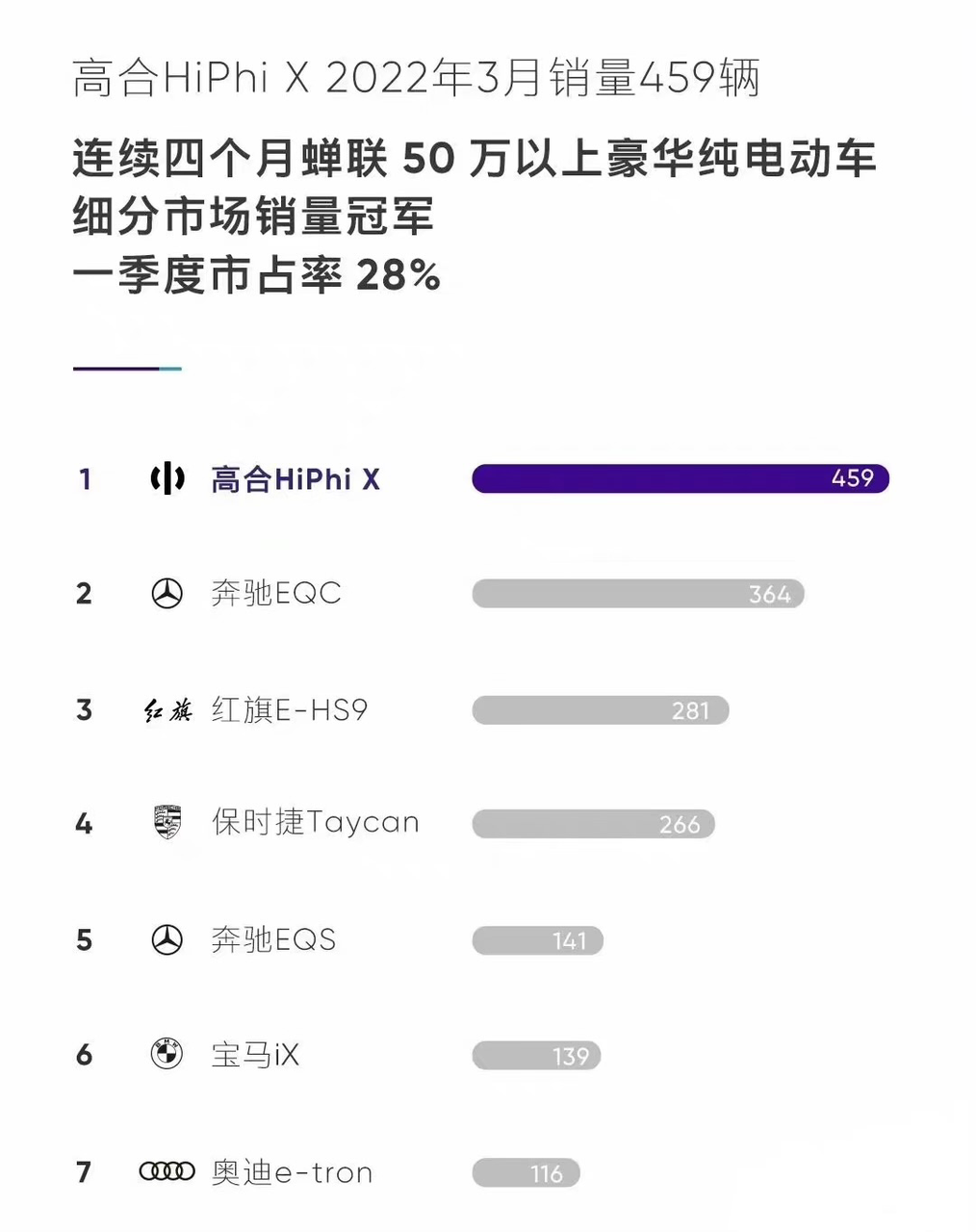
The lack of competition and intense competition in the mid-to-low-priced electric vehicle market in the field of high-end electric vehicles formed a strong contrast. On the new track, we are happy to see more things that break conventions. HiPhi, with its coherent logic, has taken a road that no one has taken before, and the product-level evolution is also obvious to all.When the idea becomes reality, I am really looking forward to driving the HiPHi Z and enjoying the attention from others soon.
This article is a translation by ChatGPT of a Chinese report from 42HOW. If you have any questions about it, please email bd@42how.com.
